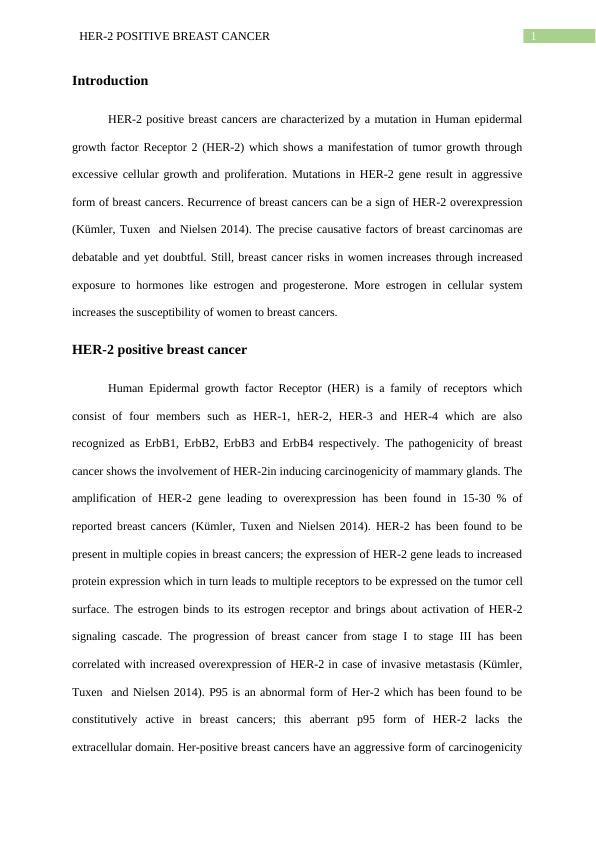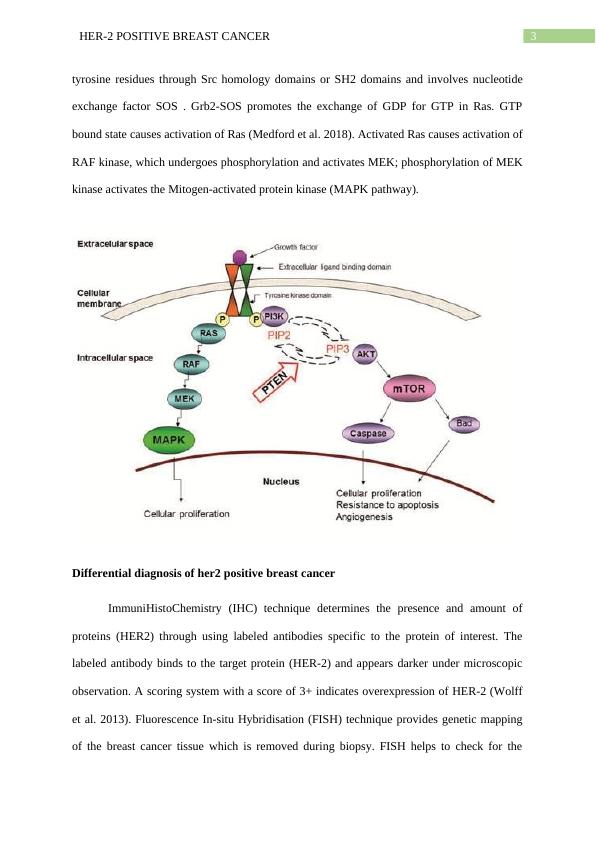HER-2 Positive Breast Cancer
Construct an essay discussing the pathogenesis of HER2 positive breast cancer, including the differential diagnosis and the involvement of HER2 family signalling pathways.
16 Pages4060 Words499 Views
Added on 2023-04-21
About This Document
HER-2 positive breast cancer is a type of breast cancer characterized by the overexpression of the HER-2 gene. This leads to uncontrolled cellular growth and proliferation, resulting in an aggressive form of cancer. This article discusses the causes, diagnosis, and treatment options for HER-2 positive breast cancer. Find study material, solved assignments, and essays on HER-2 positive breast cancer at Desklib.
HER-2 Positive Breast Cancer
Construct an essay discussing the pathogenesis of HER2 positive breast cancer, including the differential diagnosis and the involvement of HER2 family signalling pathways.
Added on 2023-04-21
ShareRelated Documents
End of preview
Want to access all the pages? Upload your documents or become a member.
EPIDERMAL GROWTH FACTOR (EGF) RECEPTOR SIGNALING AND CANCER Introduction
|8
|1282
|335
Use of Antibodies in Cell Signalling Pathways
|8
|1945
|1
Questions and Answers
|8
|1463
|488
Intestinal Cell Proliferation and Differentiation
|4
|791
|217
Test for Colon Cancer Assignment 2022
|6
|1242
|6
Analysis of Drug Tyrosine Kinase Inhibitor
|13
|3297
|57




